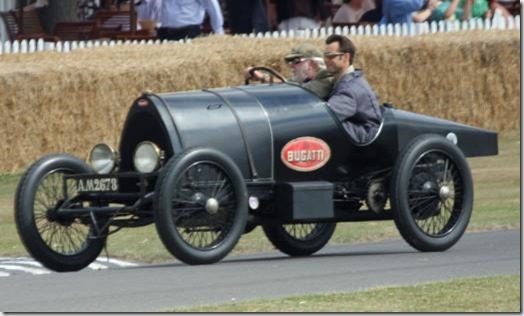Someone found the blog on that search term – and I also notice that the same question has been asked in several forms across various forums.
The simple answer is that there IS no “best” car for a driving instructor. You could teach in a 1912 Bugatti if you wanted to… well, maybe not, but only because it wouldn’t have the right safety features (someone around my neck of the woods has one, and the fuel tank is a cylinder behind the planks that serve as seats). But any mainstream car built during the last couple of decades would easily suffice.
One thing to remember is this. If you buy an older car, there is a good chance – and the older it is, the greater that chance – it will start going wrong and cost you money in repairs that a newer one wouldn’t. It doesn’t matter one jot that someone somewhere has one of the same model that allegedly “never” goes wrong. The fact remains that as they get older – just like we humans – ALL cars tend towards the inevitable point in time when they break permanently and have to be consigned to the scrap yard, or have ridiculous and disproportionate amounts of money spent on them to keep them running.
There is no such thing as an “indestructible” car. I can assure you that even with a brand new one – and I’ve had several each of different makes and models on lease – you occasionally get one that is an absolute pain, and which keeps going wrong even though all the others have been reliable. And in terms of older cars, which I’ve also owned, there is a very fine line between keep paying for wear-and-tear repairs that are age-related and getting to the point where you don’t want to get rid of it just because of all the money you’ve thrown at it. And long experience has shown me that even the most reliable car becomes less so the older it gets. On balance, new cars are the better risk.
As an aside, and going one stage further, using a classic car to teach in might seem like a brilliant USP (unique selling point) that will attract pupils. However, you shouldn’t forget that such cars handle totally differently to modern vehicles, and given that we’re mainly teaching inexperienced people who will become inexperienced new drivers who still have a lot to learn, and who will like as not buy a normal car that’s only 10-12 years old, I’m not convinced that such a USP is appropriate for a driving school – in other words, it’s for the instructor’s benefit, not the pupils he teaches.
If you are just starting out as an instructor and only have a limited budget for a car then you are likely to fail in this business very quickly if you plan on buying one outright. I say that, because it is clear that you are trying to start out solo right from the start – which is hard enough by itself, let alone if you are carrying the additional burden of driving an ancient relic around. You might get some customers out of it – and they’ll probably be of a certain type – but there is no way you can avoid the fact that a new (or newish) car is an attraction for the typical pupil, whereas an old banger isn’t. You may find that you need to drop your lesson prices, thus tightening the noose you’ve already put around your neck.
If you have a small budget initially, your best bet is to lease a car – and that includes considering the option of leasing through a franchise, which carries the additional benefit of some backup finding pupils if you choose the right one. After all, if you spend £3,000 on a used car that you own outright, you’ll lose the whole £3,000 if dies on you. However, that £3,000 would allow you to lease a car for almost a full year, during which time – if you have a good business plan – you’ll build up a pupil base and be earning reasonable money to move beyond that first year.
So, in summary, there is no perfect car for teaching in. A good instructor will be able to teach in any relatively modern saloon or hatchback model, and if they’re just starting out they should choose based on fuel economy and their own personal preference – not someone else’s.